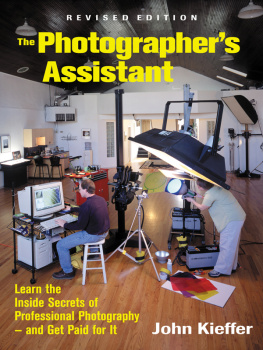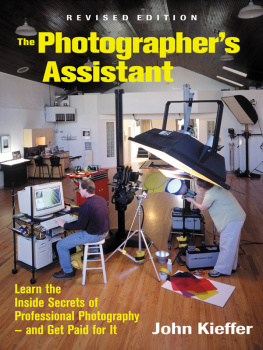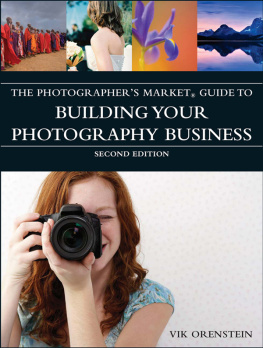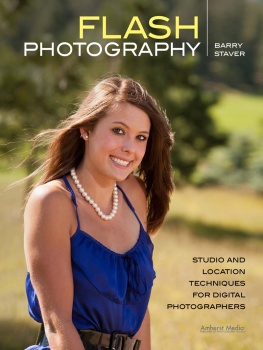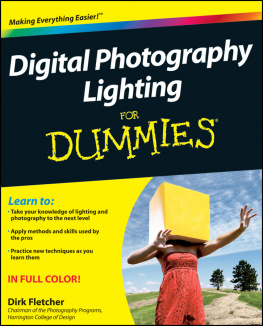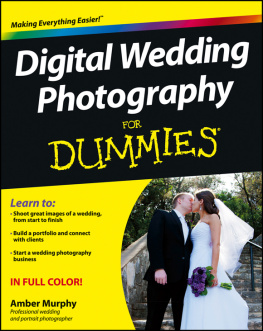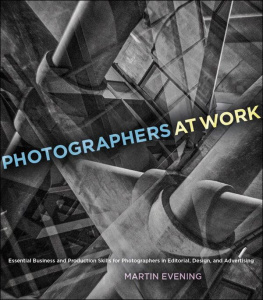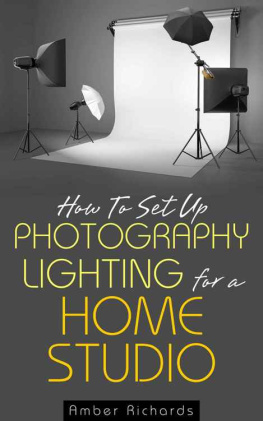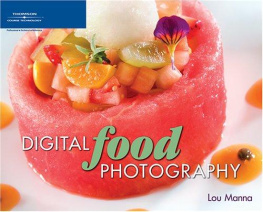The
Photographers
Assistant
The
Photographers
Assistant
JOHN KIEFFER

2001 John Kieffer
All rights reserved. Copyright under Berne Copyright Convention, Universal Copyright Convention, and Pan-American Copyright Convention. No part of this book may be reproduced, stored in a retrieval system, or transmitted in any form, or by any means, electronic, mechanical, photocopying, recording, or otherwise, without prior permission of the publisher.
05 04 03 02 01 00 5 4 3 2 1
Published by Allworth Press
An imprint of Allworth Communications
10 East 23rd Street, New York, NY 10010
Cover design by Douglas Design Associates, New York, NY
Page composition/typography by SR Desktop Services, Ridge, NY
ISBN: 1-58115-XXX-XX
eISBN: 978-1-58115-972-1
Library of Congress Cataloging-in-Publication Data
Kieffer, John.
The photographers assistant / by John Kieffer.Rev. ed.
p. cm.
Includes bibliographical references and index.
ISBN 1-58115-080-6
1. Photographic assistantsVocational guidance. 2. Freelance photography.
3. PhotographyMarketing. I. Title.
TR690.K54 2000
770.232dc21 00-048478
Printed in Canada
Cover Photo: With the help of his assistant, Brian Mark photographs a high-tech product in his Denver studio. Equipment includes a 4 5 view camera with digital back, power supplies, a large ban light, and a back light covered with a blue gel. 2000 John Kieffer.
Contents

I D LIKE TO THANK THE FOLLOWING PEOPLE FOR THEIR CONTRIBUTION TO THIS book. First my wife, Beth, for her help and commitment to both my photographic career and our stock agency, Kieffer Nature Stock. The following photographers were especially helpful: Brian Mark and Christina Dooley for their involvement with the cover photograph; Jim Cambon and his digital expertise and the photographs supplied by Tony Dube (Ulsaker Studio), Bob Kieffer (Pro 1st), Chip Simons, Rick Souders (Sidelight Studios), Mike Tangretti (Sinar Bron), and Jeff Hirschs Foto Care.
The interviews are a valuable part of the book and Id like to thank the following photographers for their time and effort: Nancy Brown, Todd Droy, Carl Fischer, Jim Grout, Michal Heron, Pete Saloutos, Shel Secunda, Chip Simons, and Steve Umland. Finally, to the people at Allworth Press, especially Tad Crawford, Nicole Potter, and David Milne.

1
M ANY OF US EXPERIENCED A SPECIAL FASCINATIONWITH PHOTOGRAPHY FROM our earliest encounter, and we continue to nurture the dream of being a professional photographer. Unfortunately, one of the first and greatest stumbling blocks is just getting your foot in the door. The best approach to getting started as a professional photographer is to become a professional photographic assistant.
Just what is a professional photographic assistant? In general, its an individual with both photographic and related skills who assists a professional photographer. Being a photographic assistant can be both a transitional period and a learning experience. It can allow the advanced amateur or recent photography school graduate to turn professional more smoothly. A good assistant has marketable photographic skills but also performs as an apprentice.
Before you can appreciate the importance and responsibilities of the assistant, its necessary to dispel some common myths regarding professional photographers, especially those photographers most likely to hire assistants. Photographers who regularly utilize assistants receive photographic assignments that have budgets for an assistant. They get the better jobs because of their ability to consistently produce a technically excellent photographic product, regardless of the subject or shooting conditions.
Many aspects of high-level photography must be approached very precisely. What is almost perfect is unacceptable. Being a little out of focus, seeing only the edge of a piece of double-stick tape, or overlooking a speck of errant dust on the set is intolerable. Imagine several professionals viewing a 4 5 color transparency with a magnifying loupe. Theres no place to hide mistakes.
Photography is a process where the production of the final image, whether its a piece of film or digital file, is the result of many small steps. Failure to perform any one of the steps satisfactorily can render the outcome useless. To consistently sustain this high level of output requires both technical and creative skills. It also necessitates a certain fastidious nature, attentiveness to detail, and overall organization by photographer and assistant.
Photography is often mistakenly perceived as a fairly laid-back, almost casual occupation. This is largely untrue for professional photography as a whole, and even more so when assistants are utilized. An acceptable product must be delivered on schedule, often by the end of the day.
Besides the assistant, others might be involved with the days workperhaps an art director, the client, a stylist, or a model. Either their schedules or the budget may not allow for extending the shoot. A photographic assistant is an integral part of this creative effort and can be a tremendous asset. Conversely, mistakes can cost thousands of dollars and damage the photographers credibility.
The bottom line is, the most successful photographers are those who wont let something go out the door until theyre satisfied that the work is the best it can be. These are the photographers assistants want to work for the most. Keep in mind, as the day grows longer and the take-out pizza gets colder, only two people are likely to be left in the studiothe photographer and the assistant. As an assistant, you should expect long days and demanding work. The rewards are financial, educational, and an active involvement with a high quality photographic experience.
A clearer view of the photographers working environment makes it easier to appreciate why the successful photographer needs a competent assistant. Well, what are an assistants responsibilities? In general terms, the assistant is hired to free the photographer from many lesser tasks. This allows the photographer to concentrate on whats in the camera frame, and ultimately on film.
The best assistants integrate a variety of skills into many different kinds of photographic situations. Besides receiving instructions from the photographer, a good assistant anticipates the progression of the shoot and takes the initiative regarding assisting duties. Finally, the assistant must be in tune with the photographera sort of mind reader.
More specifically, assistants work with photographic equipment. However, this equipment is rarely the kind mentioned in the popular photography magazines. The 35mm, single lens reflex camera (SLR), so familiar to amateur photographers, is often the format encountered least by the assistant. The 35 mm SLR is likely to be replaced by medium-format cameras (66cm and 67cm), and large-format view cameras (4 5). These often have digital backs, completely bypassing film.
The need to produce on schedule requires the photographer to control as many variables as possiblehence the use of constructed shooting environments. Artificial lighting is a big part of this controlled environment. The small flash units that attach to 35mm, SLR cameras are replaced by more powerful, electronic flash systems. These lighting systems consist of large power supplies and individual flash heads.
Next page
